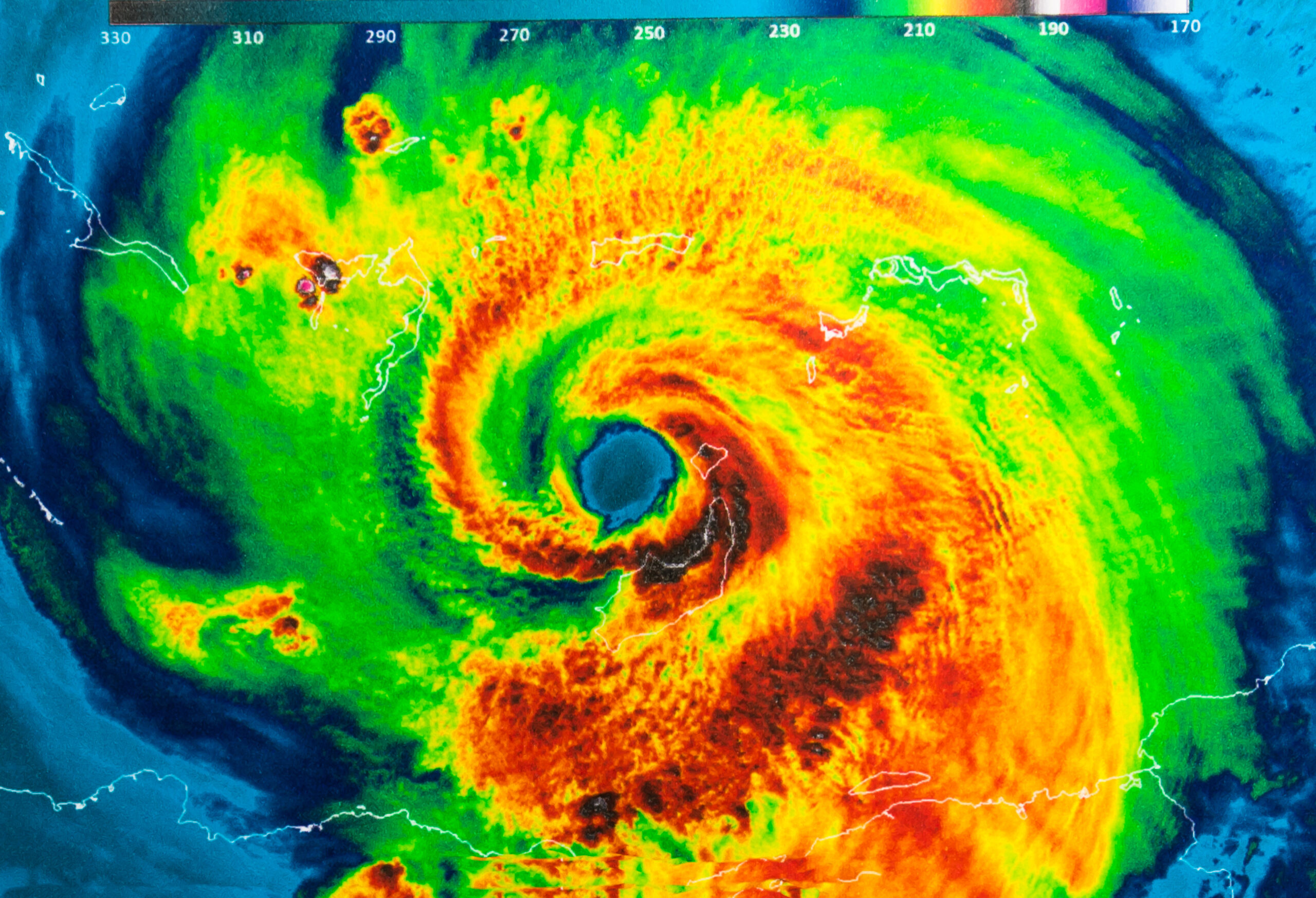Hurricane Ian Situation Report #1
This report provides an assessment of the impacts to healthcare and public health due to Hurricane Ian.
Healthcare Ready's Posture
Healthcare Ready is ENGAGED for the response to Hurricane Ian. We are closely tracking potential impacts to healthcare infrastructure and supply chain, and will share information frequently via situation reports and Twitter, Facebook, and LinkedIn. Our pharmacy operating status map Rx Open will be updated daily for pharmacies in Florida and Puerto Rico.
High-Level Situation Summary
- Ian is expected to make landfall in Florida as a Category 4 hurricane between Tuesday (9/27) evening and Wednesday (9/28) morning. The western coast of Florida is expected to be in the direct path, though impacts to other regions are expected. As of 2pm today, the storm is expected to pass west of the Florida Keys through Tuesday and then emerge at the west coast of Florida on Wednesday and Wednesday night.
- Tropical storm conditions may begin by late Tuesday, with hurricane-force winds expected in the hurricane watch area (west-central Florida) starting Wednesday morning.
- Life-threatening storm surge is possible along the west coast, with areas between Fort Meyers and Tampa Bay at highest risk. The middle of the state, including the Tampa Bay area and near Orlanda, may receive up to 15 inches of rain and flooding is likely.
Highlights
- Healthcare facilities, including hospitals and nursing homes in hurricane warning areas have begun evacuations in preparation for impacts.
- There is a moderate manufacturing footprint for plastics and medical devices in Florida, and significant operations within the state by pharmaceutical and medical-surgical supply distributors, as well as third party logistics providers. Impacts (including downstream impacts to water, power, or transportation) to these entities pose the greatest potential risk to the national healthcare supply chain.
- Florida’s access and re-entry plans and policies are managed by local officials, working closely with Florida’s Division of Emergency Management. Companies with operations in affected areas should coordinate with appropriate entities to assess whether they are authorized to enter an impacted area, only after it has been deemed safe enough to do so.
Assessment of Healthcare and Logistics Impacts
Emergency Declarations and Measures
- On 9/24, President Joseph Biden approved Florida’s emergency declaration and ordered Federal assistance to supplement state, tribal, and local response efforts as a result of increased response to Hurricane Ian. This authorizes the Department of Homeland Security Federal Emergency Management Agency (FEMA) to coordinate all relief efforts.
- On 9/26/2022, HHS Secretary Xavier Becerra Declared a Public Health Emergency for Florida. This declaration includes a Waiver or Modification of Requirements under Section 1135 of the Social Security Act (SSA). An 1135 Waiver waives or modifies requirements under the SSA to increase access to care by ensuring:
- 1. Healthcare items and services are available to meet the needs of individuals enrolled in Social Security Act program (including Medicare, Medicaid, and Children’s Health Insurance Program) requirements
- 2. Providers who give services in good faith can be reimbursed and exempted from sanctions
- On 9/23, Florida Governor Ron DeSantis declared a state of emergency for 24 counties. On 9/24, the declaration was expanded to include the entire state of Florida.
- Florida Law, Section 252.358, outlines prescription refills under an Executive Order and allows for early prescription refills.
- Mayor Lenny Curry of the City of Jacksonville, declared a State of Emergency for Duval County effective 12PM Wednesday, 9/28.
- The Federal Motor Carrier Safety Administration (FMSCA) is expected to issue a regional emergency declaration today (9/27) for Florida, North Carolina, South Carolina, Georgia, and Alabama to facilitate transport of goods following the storm. The declaration will likely be posted on this FMSCA site when available.
Critical Infrastructure Impacts
- Power
- Florida Power and Light Company (FPL), and Tampa Electric Company are two of the largest providers in the Tampa area. Both companies are expecting power outages and encouraging their customers to prepare.
- Fuel
- Federal and state officials are coordinating to ensure fuel needs will be met during response and recovery. Florida officials are also identifying opportunities to safely store fuel and transport equipment as the storm passes. Port impacts pose significant risk to fuel supply for central Florida, and cascading impacts on the movement of goods.
- Communications
- Restoration crews are being pre-positioned to support damage assessments following landfall, and eventual restoration. We anticipate that emergency services, including 911 call centers and any hospital or healthcare help lines will be prioritized.
- Access and Reentry
- Florida’s access and re-entry plans and policies are managed by local officials, working closely with Florida’s Division of Emergency Management. During a disaster, private sector companies should coordinate with the Division of Emergency Management, in addition to local health departments and local emergency managers to assess whether they are authorized to enter an impacted area, only after it has been deemed safe enough to do so.
- Individuals who wish to enter the disaster area, must have the following on hand:
- Valid government issued ID (driver’s license, passport)
- Proof of employment (employer credentials, document on company letterhead)
- Demonstrated need to enter the area (work order, inventory list, employer authorization)
- Note, DHS CISA’s Access Coordination Letter is not an acceptable document to enter any disaster areas in Florida.
- Transportation
- Florida 511 will be providing real-time traffic conditions and incident information.
- Road closures
- While road closures have yet to be reported, there are reports of evacuation driving traffic on I-75 and I-4 outside of Tampa, along with increased traffic at stores and gas stations as the public prepares for the event. No major issues have been reported.
- Airports
- Tampa Airport Closing at 5 p.m. today to all commercial flights, flights are currently being canceled by airlines.
- St. Pete-Clearwater International Airport Closed to commercial flights at 1 p.m. today.
- Port status
- The following ports are under Port Condition Zulu, meaning the facility is shut down but fueling operations can continue: Port Tampa Bay, SeaPort Manatee, Port St. Pete, Port of Palm Beach, and Port of Key West.
- The Port of Jacksonville is expected to move to Port Condition Yankee this evening (9/27), which means vessel movement will stop but fuel operations continue. Port of Jacksonville is expected establish Port Condition Zulu on 9/28.
- The Port of Jacksonville is involved in shipping supplies to Puerto Rico. If the Port remains closed for a long period of time, it could impact Hurricane Fiona relief. However, there are plans to offload operations to other ports if needed.
Healthcare Response Updates and Needs
- Healthcare Facilities
- As of 9/27, at least 40 patients have been evacuated from Florida hospitals ahead of Hurricane Ian. The following hospitals evacuated patients along with several other adjustments.
- South Tampa and West Tampa
- Central Tampa emergency facility
- HCA Florida Pasadena Hospital also canceled elective procedures
- Tampa Bay Nursing Homes are working on evacuating residents
- Tampa General Hospital also announced ambulatory location closures and canceled elective surgeries
- Johns Hopkins All Children’s Hospital in St. Petersburg, Fla., announced it is open, but has likewise postponed elective surgeries and closed outpatient care facilities.
- As of 9/27, there have been several VA Health Care facilities closures and partial closures throughout the state in preparation for the hurricane.
- As of 9/27, at least 40 patients have been evacuated from Florida hospitals ahead of Hurricane Ian. The following hospitals evacuated patients along with several other adjustments.
- Emergency Medical Services
- There are several units prepositioned and on standby for Hurricane Ian response, including: Firefighters, Cadets, and other EMS providers; Members of Virginia and Ohio’s taskforces, including fire departments and organizations from various counties and cities; USF volunteers in conjunction with the Florida Department of Health; and Medical Response Unit’s Specialized Disaster Response Team on standby to assist with high-needs shelters as needed.
- Pharmacy
- Express Scripts (pharmaceutical delivery service) may arrive late due to Hurricane Ian.
- Rx Open is activated for Florida.
- Dialysis
- During past hurricanes that impacted Florida, including Hurricane Michael, KCER helped to coordinate national-level preparedness and response activities, such as daily emergency status calls, reporting facility operational status and needs, and collaborating with networks to address patient access to care. We anticipate that additional information on the needs of dialysis patients will be reported through such mechanisms over the next week.
- There are 5 dialysis centers in the Tampa area, and 3 just south of Fort Meyers.
Supply Chain
- Manufacturing
- Florida has a relatively large pharmaceutical and medical devices manufacturing footprint, with most companies concentrated in northeast Florida (near Jacksonville). Though not anticipated to have direct impacts from the, the region is still expected to experience heavy rainfall with the possibility of flash flooding.
- Florida has a moderate plastics manufacturing presence. Should the state be unable to supply power to these manufacturers, due to impacts to critical infrastructure caused by Ian, it is possible upstream medical supply could be impacted in the coming months. This analysis of potential impacts is based on the observed impacts to plastics following the severe winter weather that affected Texas in 2021.
- No major disruptions to PPE manufacturing, or downstream impacts across the US are anticipated from this event.
- Distribution
- Many of the medical product distributors as well as third party logistics providers have operations and/or distribution centers in Florida. We will be closely tracking any impacts to facilities or centers to determine any downstream supply chain impacts.
Resource Staging
- FEMA is preparing and staging supplies in strategic locations in Alabama and Florida. One location is Maxwell Airforce Base in Alabama.
- Supplies being staged at Maxwell Airforce Base include 3.5 million liters of water and 3.6 million meals. Supplies in Alabama include more than a million liters of water, more than 480,000 meals and more than 7,200 cots.
- A US Army Corp of Engineers team will deploy to Craig Field in Alabama ahead of the storm to provide power restoration services.
- FEMA activated a National Medical Transport Support contract for 52 ambulances and 100 paratransit seats. These resources will stage at Orange County Convention Center in Orlando Florida.
- U.S. Department of Health and Human Services has pre-positioned two 15-person Health and Medical Task Force teams from its National Disaster Medical System (NDMS), a 13-person incident management team, and two pharmacists to assist with the response in Florida,
Emergency Prescription Refills
- As of 9/24/2022, early prescription refills are permitted under State of Emergency. All health insurers, managed care organizations, and other entities licensed by the Office of Insurance Regulation and provide prescription medication coverage as part of a policy or contract will waive time restrictions on prescription medication refills.
- Opioids are considered a controlled substance, and therefore excluded from emergency prescription refill laws. According to the CDC, there was a rate of 43.4 retail opioid prescriptions dispensed per 100 persons in Florida in 2020.
- About 13% of Florida’s population is uninsured. Emergency Prescription Assistance Program (EPAP) is the federal program that provides medication coverage for uninsured patients, but the program has not yet been activated.
- Healthcare Ready will be closely tracking the activation status of the Emergency Prescription Assistance Program (EPAP) to understand what resources may be available to uninsured individuals in disaster areas.
Evacuations and Curfews
- As of 9/27/2022, the following Florida counties have issued mandatory evacuation orders: Charlotte County, Citrus County, Collier County, Hernando County, Hillsborough County, Lee County, Levy County, Pasco County, Pinellas County, and Sarasota County.
- This impacts about 2.5 million Floridians.
- As of 9/27/2022, the following Florida Counties have issued voluntary evacuation orders: Clay County, Gilchrist County, Glades County, Highlands County, Manatee County, Putnam County, St. Johns County, Taylor County.
- As of 9/27/2022, there are no outlined curfews for Floridian residents.
Sheltering
- American Red Cross has thirteen shelters open in Tampa in anticipation of the hurricane.
- 56 shelters open with unknown number of occupants (Region IV FCO).





